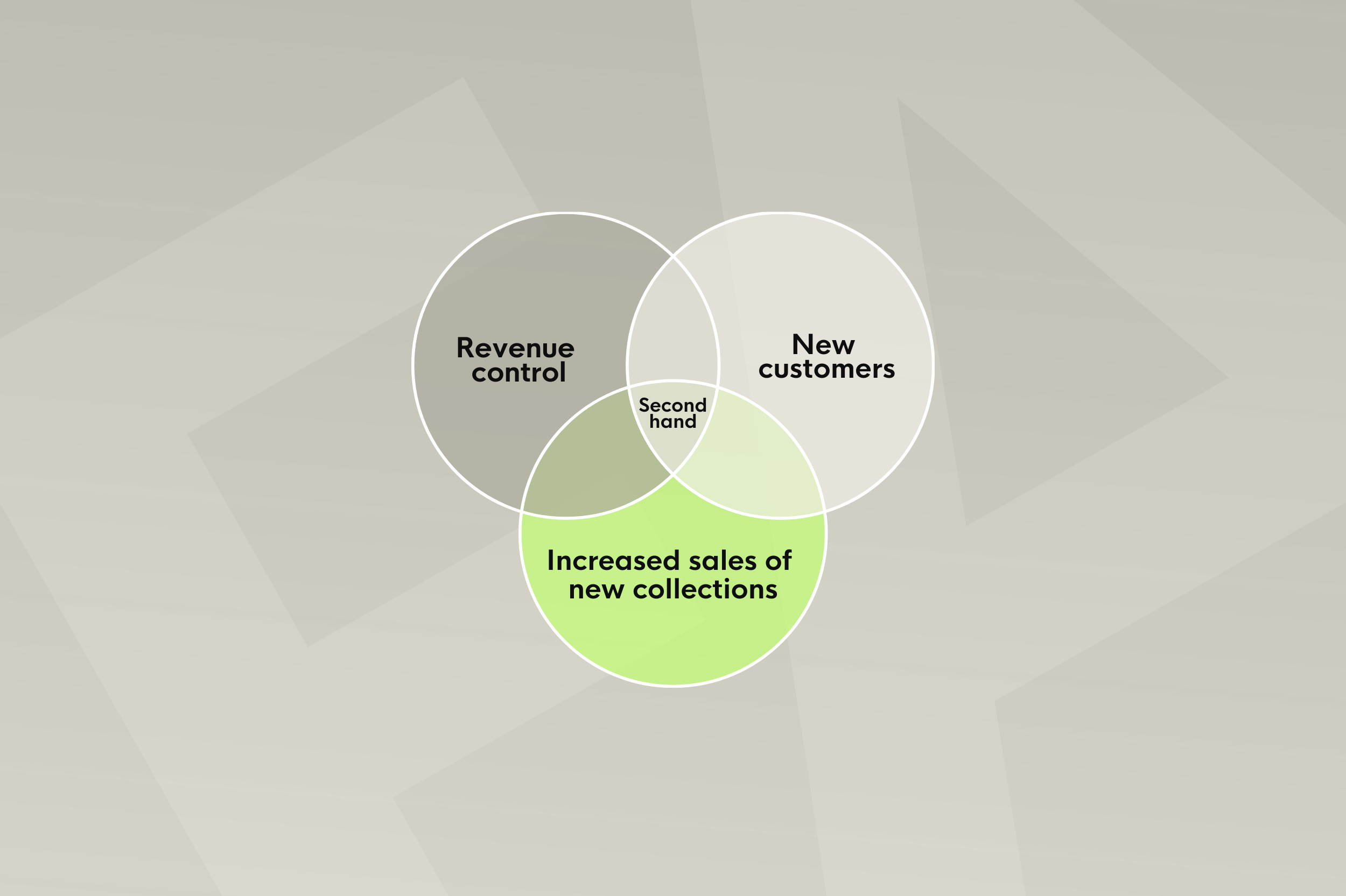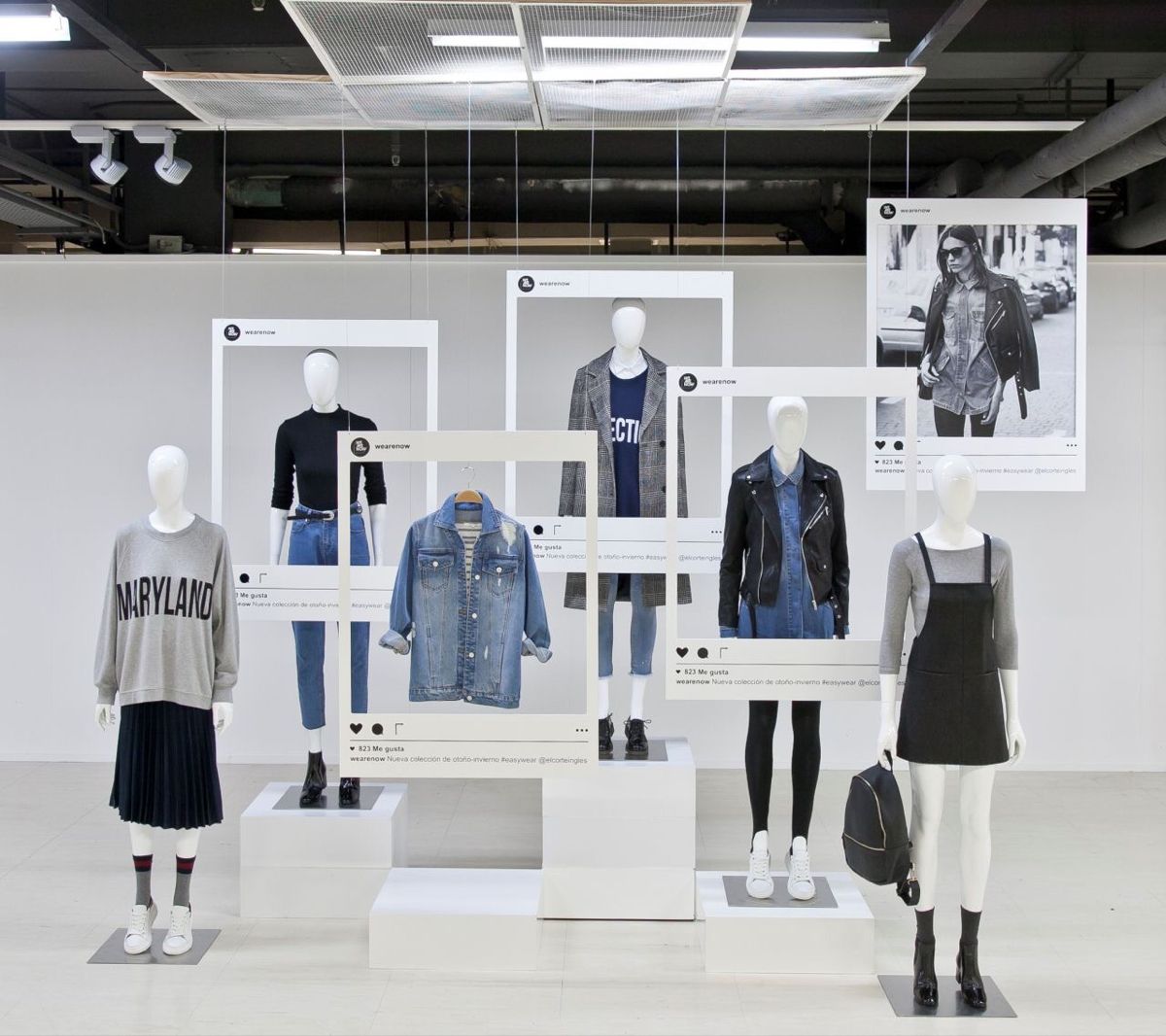How second-hand and circular economy practices can save the industry and the planet

As the environmental and economic crisis intensifies, the fashion and luxury sectors must reinvent themselves to remain relevant and thriving. Fashion and luxury brands have a unique opportunity to position themselves as leaders of change by adopting second-hand and circular economy practices. This article explores how second-hand can not only meet consumers' growing sustainability expectations but also create new revenue streams for brands, while highlighting the increasing awareness of environmental and social impacts.
In 2050, we will consume three times the available resources:
The overconsumption of natural resources is a major concern. According to experts, if we continue on this path, we will use three times more resources than our planet can provide annually by 2050. To counter this trend, it is imperative to rethink our consumption and production methods, particularly in the fashion industry. It is also crucial to consider the life cycle of products to minimize environmental and social impacts at every stage, from design to end-of-life.
The effects of overconsumption are not limited to the depletion of natural resources but also have significant repercussions on the environment and society. Mass industrial production, particularly in the fashion sector, is responsible for a substantial amount of greenhouse gas emissions, water pollution, and ecosystem degradation. Additionally, the waste generated by fashion items is reaching alarming levels, with millions of tons of clothing discarded each year.
Our current consumption patterns also lead to social inequalities. The relentless pursuit of financial results drives companies to outsource production to countries with more lenient regulations, often at the expense of working conditions and human rights. Faced with these challenges, it becomes imperative to rethink and adopt more environmentally respectful and socially equitable practices to ensure a sustainable future.
Overconsumption of textiles:
Each year in France, 2.6 billion textile products are put on the market, which is 40 per person. However, we only wear 30% of our clothes. Consumers in the European Union produce between 5.2 and 7.5 million tons of textile waste per year, with a projected growth of 20% by 2030. One of the major challenges is that many of these items end up in landfills outside the OECD, contributing to global pollution.
Adopting the principles of the circular economy can help address the problem of textile overconsumption by limiting resource waste and waste generation.

Moving from the low-cost economy to the quality economy:
Although clothing prices have fallen by more than 30% relative to inflation between 1996 and 2018, household spending on clothing has increased by 17%. This paradox underscores the unsustainability of current economic models and reinforces the need to transition to a quality economy, where the durability and longevity of products are valued.
The current situation forces brands to reinvent themselves:
With the current crisis, brands must find new acquisition and retention levers. The cost of customer acquisition has increased by an average of 35% over the past five years for natural and organic referencing and by 60% for paid referencing. This increase in costs is pushing brands to explore alternatives to attract and retain customers, particularly through second-hand offerings.
The legal and regulatory environment favors change:
New legislation, such as the AGEC Law and the CSRD Directive, impose strict sustainability standards. For example, second-hand reduces the carbon footprint of products from 30 kg of CO2 to just 3 kg per product. Additionally, if the number of uses of a garment were doubled, GHG emissions would be reduced by 44%.
The European Union's strategy for sustainable fashion:
By 2030, clothing put on the market must be sustainable, recyclable, and made from recycled fibers. Second-hand and repair services will become the norm, replacing fast fashion. This transition to a circular economic model will benefit both consumers and businesses while reducing environmental impact.
Sustainable alternatives:
Faced with these growing challenges, various sustainable alternatives are emerging in the fashion sector. One of them is the circular economy, a model that aims to reduce waste by promoting the reuse, repair, and recycling of products. By adopting this model, brands can extend the lifespan of their items, thereby minimizing their ecological footprint.
In parallel, second-hand clothing resale platforms are gaining popularity. They offer consumers an alternative to buying new clothes while giving used items a second life. Companies like Vinted, ThredUp, and The RealReal are experiencing growing success, confirming a change in mindset among buyers who are increasingly seeking eco-friendly and economical options.
The textile industry is also seeing a rise in sustainable and innovative materials. For example, the use of natural fibers such as linen and hemp, which are less water and pesticide-intensive than traditional cotton, is gaining popularity. Additionally, the development of textiles made from recycled materials, such as polyester recycled from plastic bottles, represents a significant advancement in waste reduction and resource conservation.
Finally, upcycling, or creative reuse, is becoming a major trend. This practice involves transforming used clothing or fabric scraps into new, high-quality, often unique products. It is not only a creative response to waste management but also a way to merge design and sustainability.
In summary, although the challenges related to textile overconsumption and overproduction are considerable, sustainable alternatives offer promising solutions. Adopting these practices could not only mitigate the negative environmental and social impacts of the fashion industry but also pave the way for a more sustainable and equitable future.
Decoupling revenue from the number of products:
Brands will have the opportunity to increase their profit margin per product by reselling it multiple times. This strategy allows for decoupling revenue from the number of products put on the market, thereby promoting economic and environmental sustainability.

By implementing this strategy, companies can not only reduce their environmental impact but also strengthen customer loyalty. When consumers know that the clothes they buy can be resold or recycled, they are more likely to choose brands that engage in sustainable practices. Additionally, this approach can attract a new segment of environmentally conscious consumers who want to make ethical choices.
Adopting this strategy also requires brands to rethink their production model. Companies must consider more sustainable manufacturing methods, using higher-quality materials and adopting responsible production techniques. This could include the use of innovative technologies that reduce water and energy consumption, as well as the implementation of closed-loop recycling programs.
Beyond production, logistics and distribution also play a crucial role in sustainability. Companies can reduce their carbon footprint by optimizing their supply chains and choosing eco-friendly modes of transportation. The integration of reverse logistics, where used products are returned to be reused or recycled, is another initiative that can significantly contribute to waste reduction.
Finally, consumer education and awareness are essential for the success of this transformation. Brands must invest in communication campaigns that highlight the environmental and economic benefits of second-hand and recycling. By informing and educating consumers about the positive impacts of their purchasing choices, companies can encourage more responsible and sustainable behaviors.
In conclusion, decoupling revenue from the number of products not only benefits the environment but also represents a strategic opportunity for businesses. By adopting sustainable practices and encouraging consumers to participate in the circular economy, brands can create long-term value and contribute to a more sustainable future.
Examples of mature markets:
Industries such as automotive and electronics have already proven the viability of second-hand. For example, 40% of cars sold each year in Europe are used. The used smartphone sector represents 30% of the global market. These examples show that second-hand can be a sustainable and profitable economic model.
Similarly, the household appliance and furniture industry is beginning to embrace this economic model. More and more consumers are willing to buy refurbished appliances or used furniture, looking for good deals while reducing their environmental impact. Online platforms dedicated to the resale of household items are experiencing a similar boom to that observed in the automotive and smartphone sectors.
Fashion companies can draw inspiration from these examples to apply similar strategies in their operations. The success of second-hand in other sectors demonstrates that, when well implemented, these practices can not only be viable but also enriching for consumers and businesses. Additionally, by leveraging advanced technologies such as e-commerce platforms and product tracking systems, fashion brands can optimize the resale and recycling process, ensuring a smooth transition to more sustainable models.
In conclusion, many sectors are leading the way in adopting second-hand as a common practice. By following these examples, the fashion industry can not only reduce its ecological footprint but also open new avenues for economic growth, demonstrating that sustainability and profitability can go hand in hand.
Examples of circular economy success:
The circular economy is translated into concrete initiatives that demonstrate its potential to transform our economic model. For example, some companies have implemented closed-loop recycling systems, where production waste is reused to manufacture new products. This approach reduces waste and conserves natural resources.
Other companies have adopted shared consumption models, such as clothing or equipment rental, allowing for the maximization of product use while reducing the need to produce new items. These initiatives also foster the creation of new jobs and economic opportunities in the circular economy sector.
The promotion of environmental and social responsibility is also at the heart of these successes. Companies have integrated ethical practices into their supply chains, ensuring fair working conditions and reducing their ecological footprint. These examples show that the circular economy is not only a viable solution for the environment but also an opportunity for sustainable economic growth.
Market opportunity:
Resale, rental, and repair have the potential to grow from 3.5% of the global fashion market today to 23% by 2030, representing a $700 billion opportunity. The democratization of resale platforms has influenced consumer behavior, who now buy with the intention of reselling their products, especially in a context of growing inflation.

Challenges and issues for brands:
Brands must overcome several challenges to integrate second-hand into their economic model. This includes managing the costs of reverse logistics and processing individual items, as well as creating a seamless customer experience. Additionally, large resale platforms capture a significant portion of revenue without investing in the brands themselves.
Reinventing the customer experience:
To succeed, brands must offer a second-hand experience that rivals that of new products. This involves minimizing friction points for sellers and maximizing buyer confidence in the quality and cleanliness of products.
To achieve this, brands must invest in the technology and infrastructure necessary to ensure a smooth and seamless resale experience. This can include quality verification systems, cleaning and repair services, and intuitive online platforms that facilitate the selling and buying process. Additionally, loyalty programs can be implemented to incentivize customers to return, offering discounts or benefits when they participate in the resale of their items.
Customer engagement is also crucial. By creating communities around second-hand, brands can strengthen loyalty and encourage a sense of belonging. Initiatives such as DIY workshops, exchange events, or online forums where customers can share their experiences and advice on extending the life of products can contribute to this sense. These interactions not only strengthen the customer relationship but also educate consumers about the benefits of sustainability and reuse.
By reinventing the customer experience around resale and integrating sustainable practices into every aspect of their economic model, brands can not only capture a significant share of the growing second-hand market but also strengthen their position as ethical leaders in the fashion industry.
Join the Circular Revolution
The growing awareness of sustainability issues among consumers offers a unique opportunity to reconcile ecology and economy in times of crisis. By adopting second-hand and circular economy practices, fashion and luxury brands can meet consumers' sustainability expectations while creating new revenue streams. To succeed in this transition, it is crucial to rethink performance indicators, customer incentives, and the user experience to maximize product use rather than producing and selling more.
Join the movement towards sustainable and circular fashion and discover how your brand can benefit from these new opportunities. Explore FAUME's technological and logistical solutions to integrate second-hand into your business strategy today.
Stay ahead of the game!
Sign up to FAUME's The Secondhand Review newsletter
Read inspiring stories from brands that have successfully launched their secondhand businesses with FAUME







